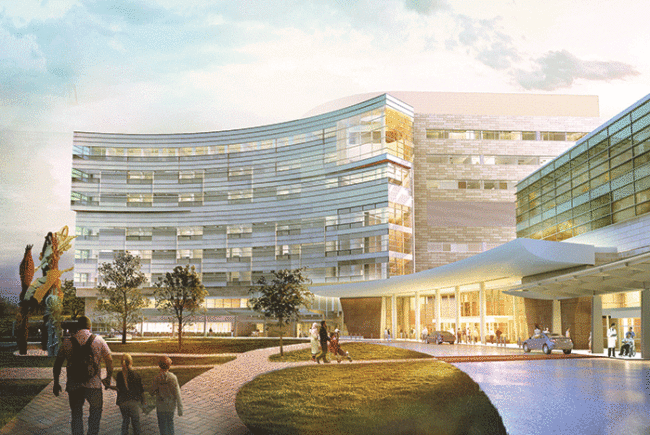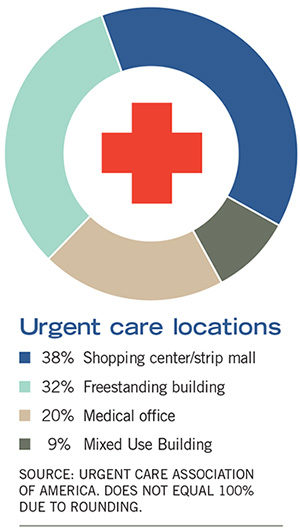The Affordable Care Act is driving the trend toward outpatient construction, as hospitals and health systems adopt population health management and manage care across the continuum better, construction and design experts say.
The findings in Health Facilities Management’s 2016 Hospital Construction Survey reflect this trend.
Compared with 2015 data, outpatient construction projects to address population health doubled across most categories. These included ambulatory surgery centers (48 percent vs. 22 percent); freestanding imaging (23 percent vs. 13 percent); health system-branded clinics in retail space (23 percent vs. 14 percent); health system-branded general medicine and family care in the community (53 percent vs. 24 percent); immediate care facilities (49 percent vs. 17 percent); medical office buildings (60 percent vs. 22 percent); and telehealth (23 percent vs. 9 percent).
Medical office buildings saw the biggest jump in adoption over the prior year.
“Medical offices are one of the go-to projects that seem to come up most often," explains Joe Sprague, principal and senior vice president of HKS, Dallas. “They are less costly to construct than inpatient [facilities] and they offer a great marketing tool so providers can position themselves well in the community.”
Randy Keiser, national health care director at Turner Construction in Nashville, Tenn., agreed. “It’s like an arms race,“ he says. “One system starts doing it and everyone is doing it. It allows them to get out into the community and find patients before they get really sick and wind up in the emergency department (ED). All our clients are either doing outpatient projects or talking about them.”
The trend toward outpatient construction also speaks to patient satisfaction, experts say. Hospitals and health systems are seeking to meet patients in the setting they prefer, with providers they prefer.
It is also about becoming more efficient, says Andrew Quirk, senior vice president and national director at Skanska USA. For instance, imaging, EDs and surgery ranked pretty high in terms of projects underway or planned in the next three years at 35 percent, 29 percent and 28 percent, respectively.
“We see a lot of clients around the United States embarking on projects that are based on efficiencies,“ Quirk says. “They are trying to get throughput, reach positive outcomes and better support the new model of care.”





